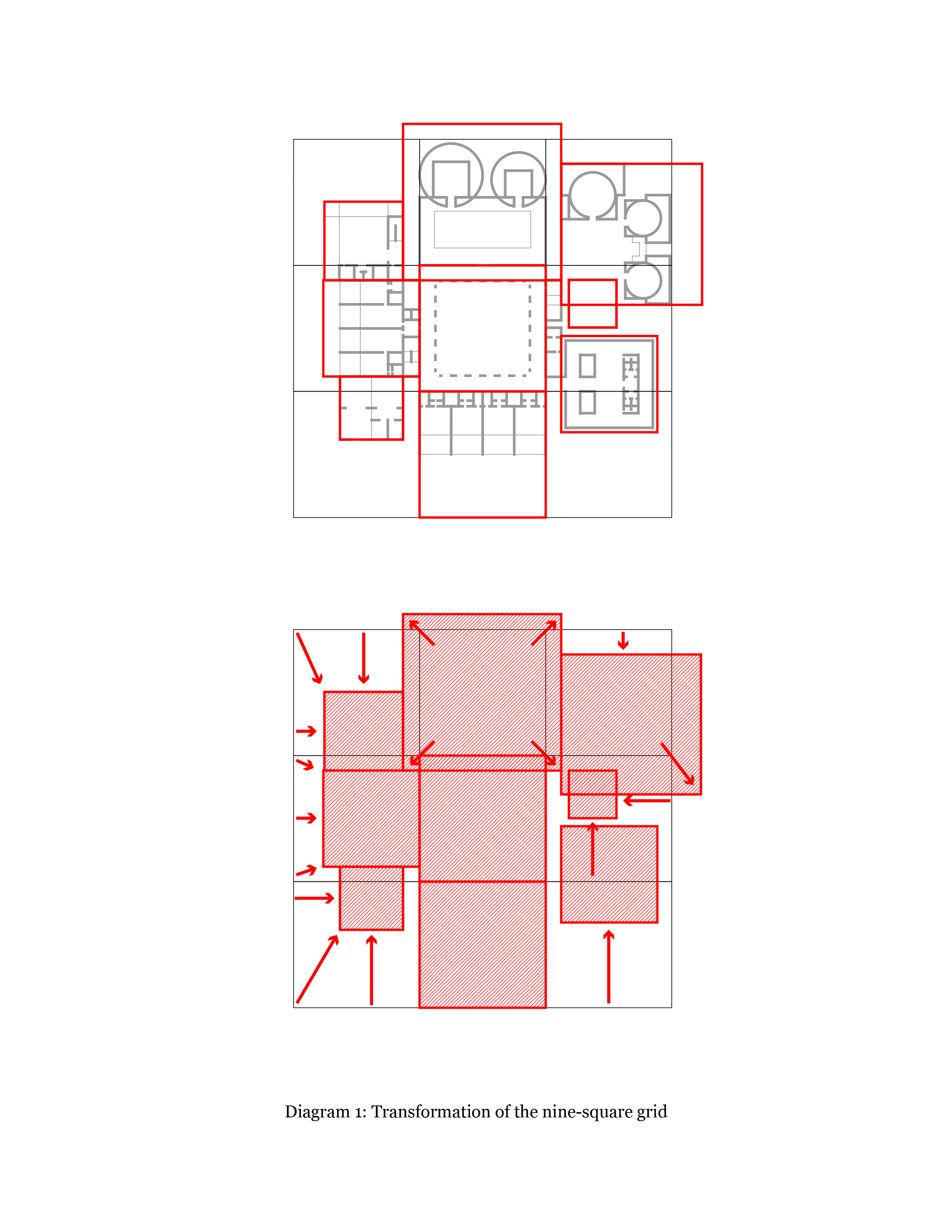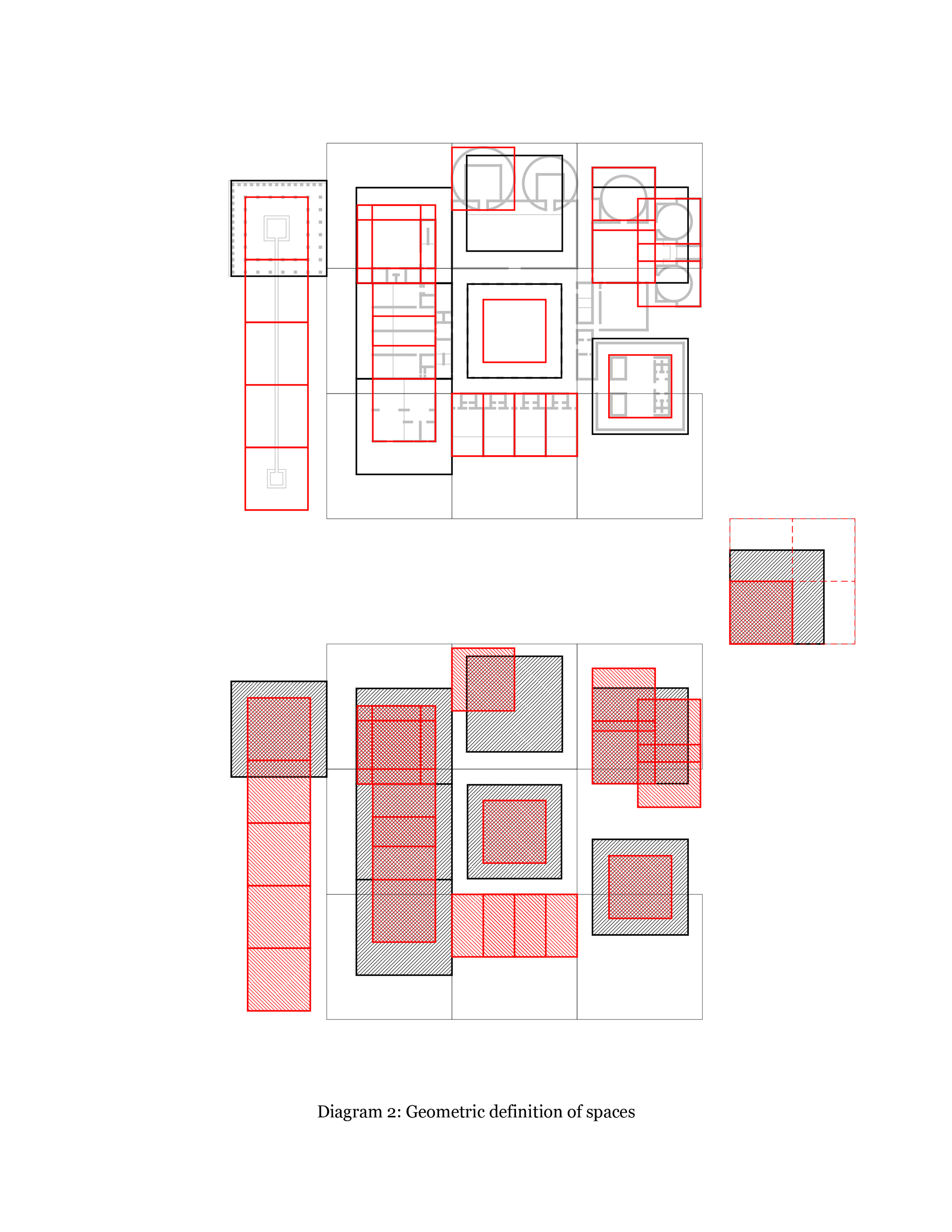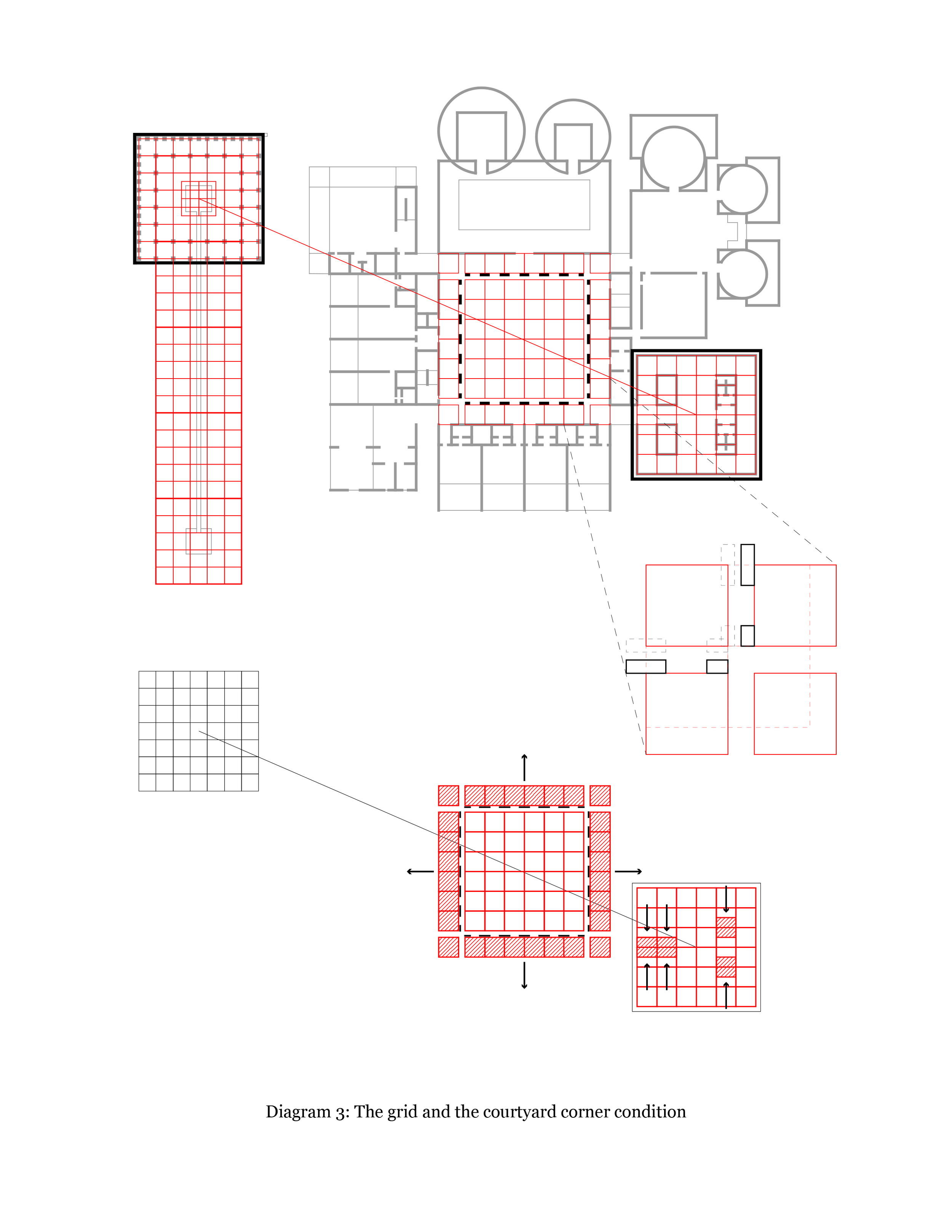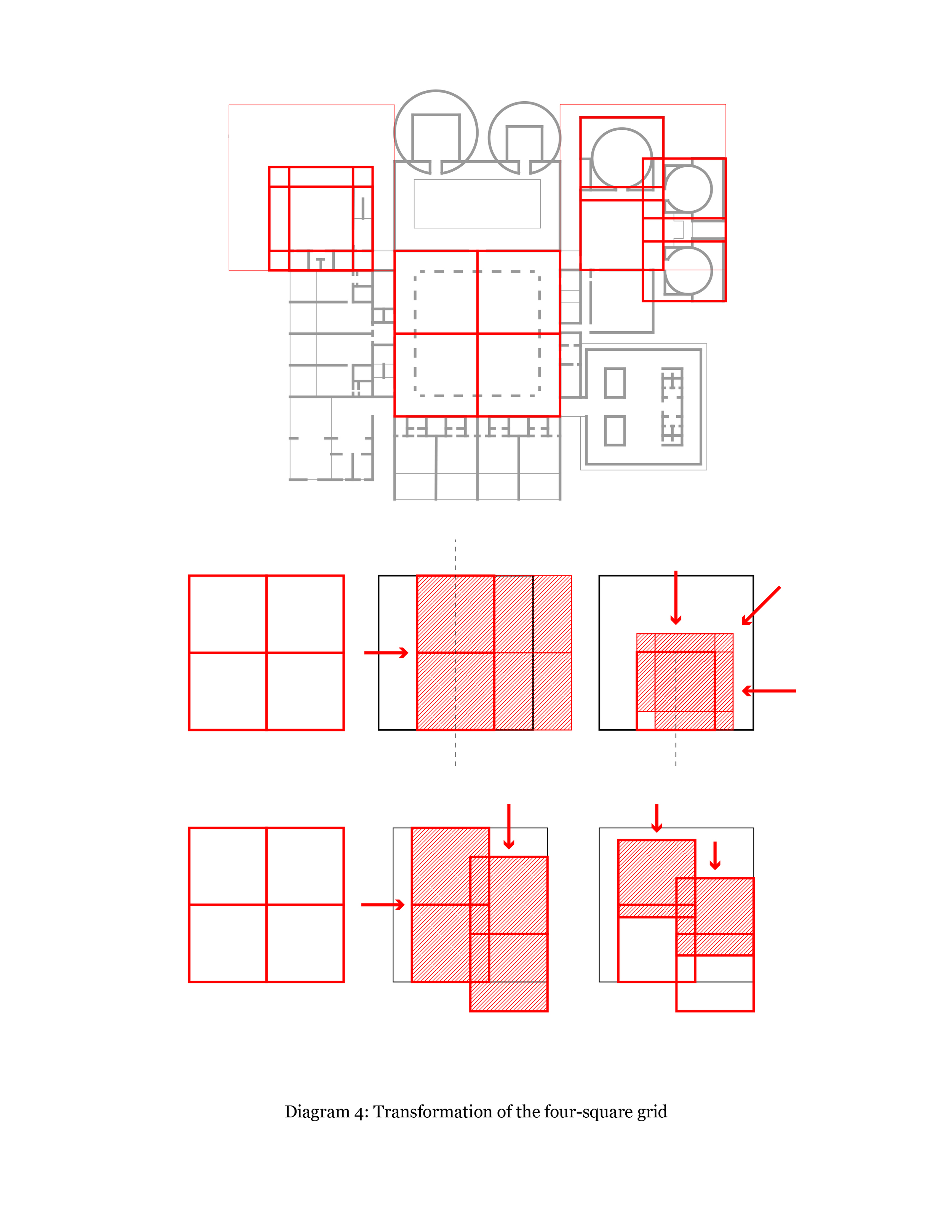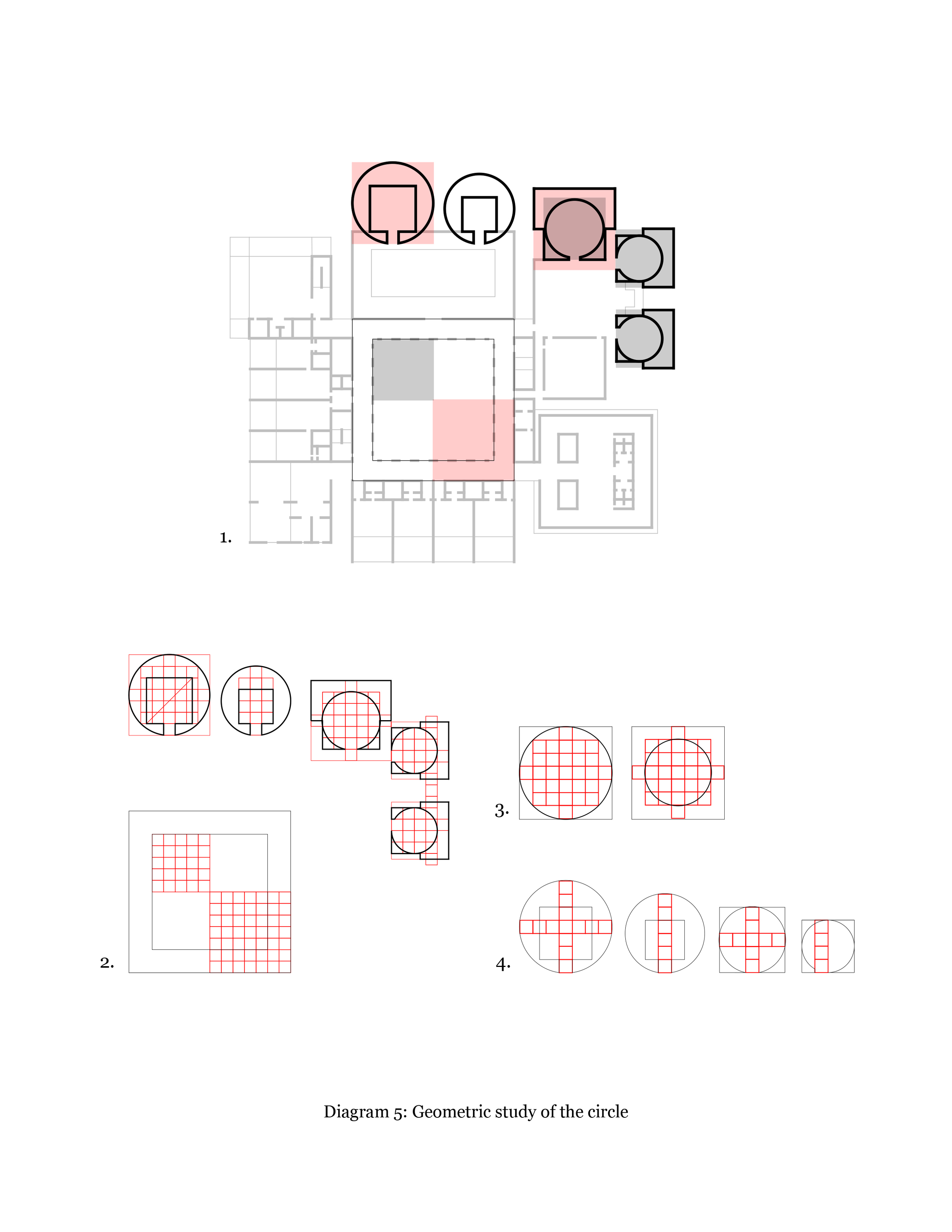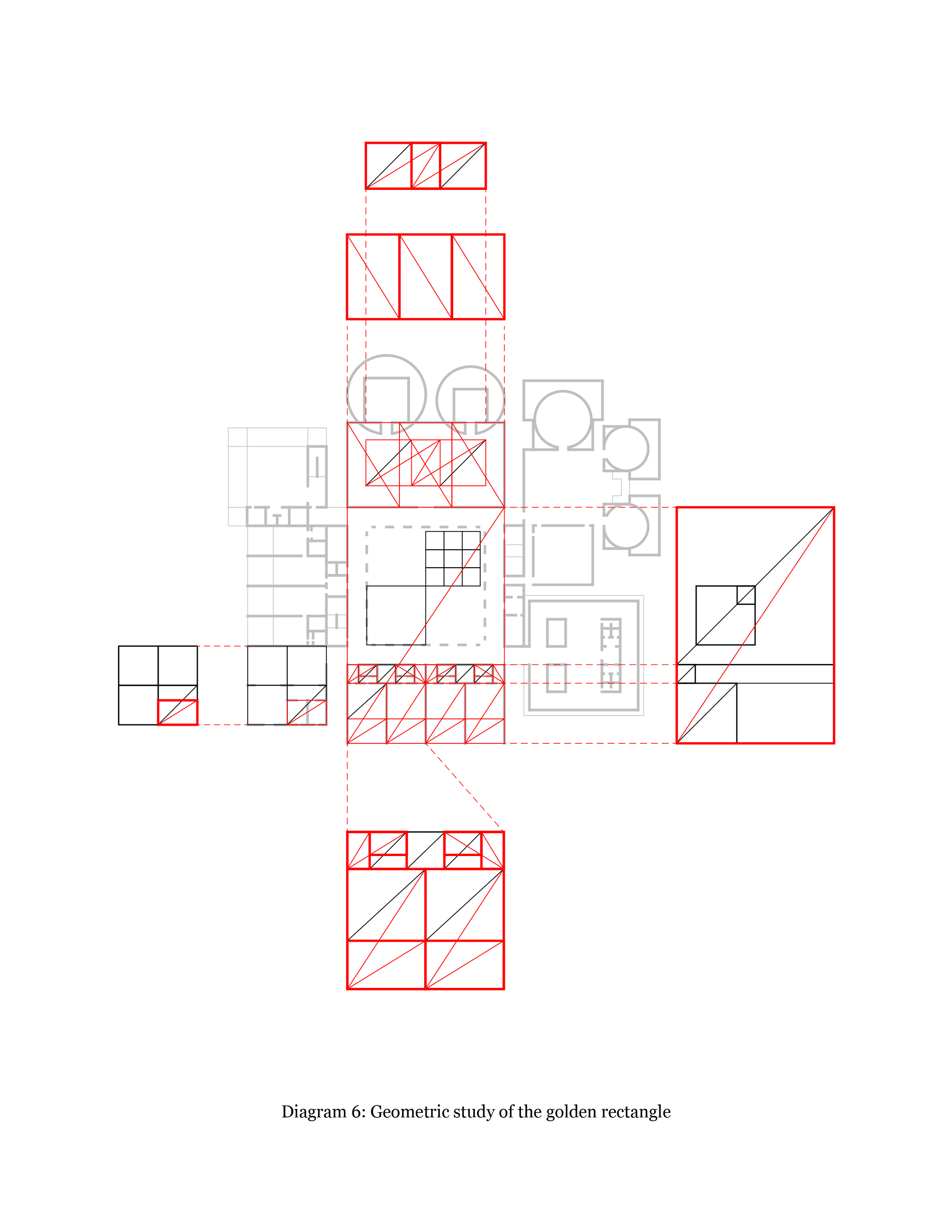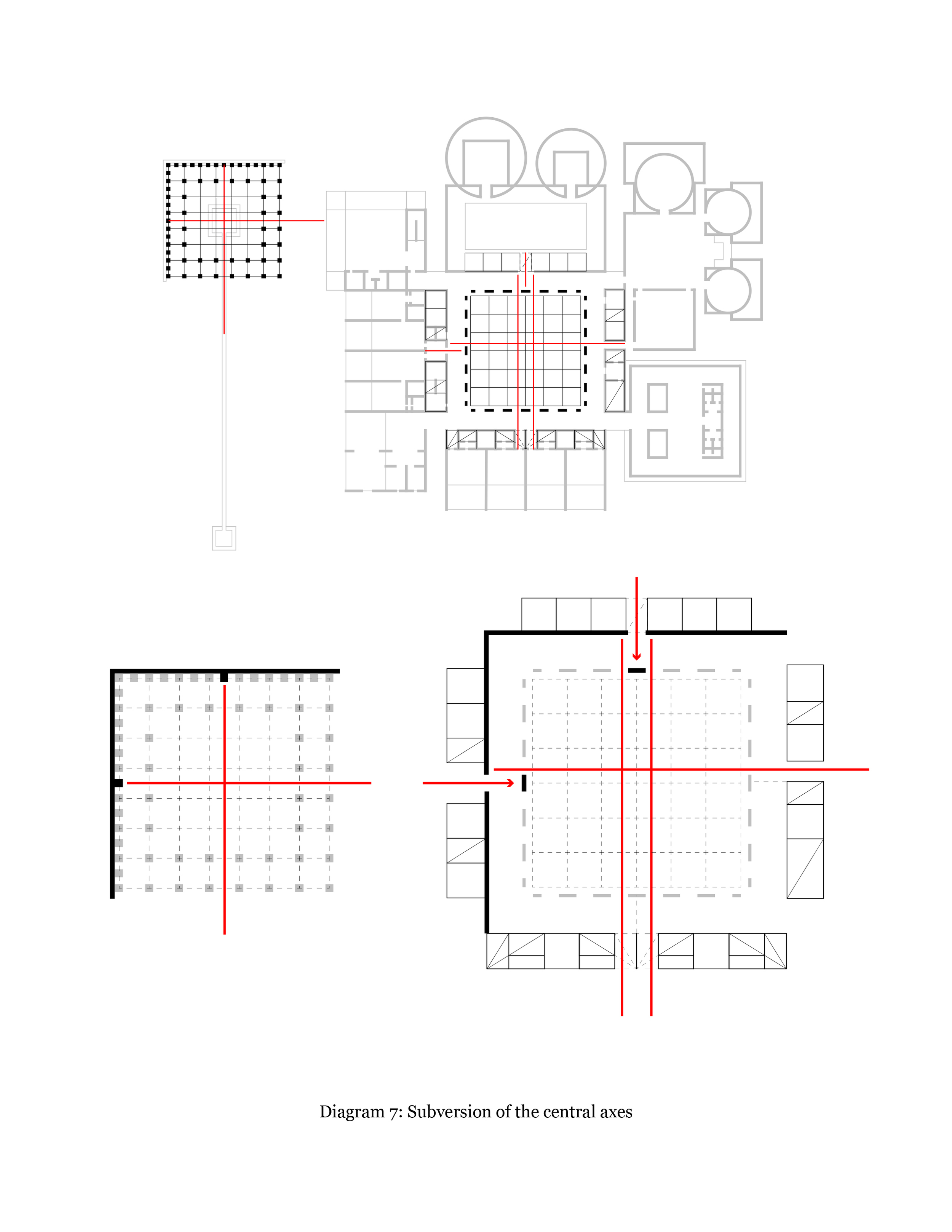
Geometry and Transformation: A formal analysis of Louis Kahn's Meeting Place at the Salk Institute
The Meeting Place at the Salk Institute is one of Kahn’s most meticulously designed unbuilt plans. While designing the Salk Institute laboratories (1965) Kahn developed a counterpoint to the laboratory design with the design of the Meeting Place. For Kahn, the Meeting Place would bring balance to the laboratories of the Salk Institute, and stated that “if the laboratories were the Salk Institute’s lungs, then the Meeting Place would be its brain.” Although the Meeting Place was not part of the original programmatic requirements for the site, Kahn became much more interested in the design of the Meeting Place than of the laboratories themselves during the design process, constantly visiting the design and at times neglecting the design of the laboratory spaces in favor of the Meeting Place. The Meeting Place was intended to be constructed; however due to lack of funds it was ultimately not built.
In the Meeting Place, Kahn’s obsession with geometry and transformation becomes clear. Due to the unspecific programmatic nature of the Meeting Place, Kahn had much more freedom to experiment with its design than with the design of the laboratories. Perhaps Kahn used the Meeting Place as a way to approach and test various ideas and issues that arose when designing the laboratory space, because ultimately, the plan for the Meeting Place reads as a series of meticulous and deliberate studies in geometry and transformation, much more complex and experimental than the design of the laboratory spaces.
Full paper available upon request.
Advisor: Peter Eisenman
(Research paper: 25 pages. Yale School of Architecture, M.Arch. 2012.)

